Demand planning is an essential part of supply chain management that involves forecasting and managing customer demand for a product or service. It is a critical process that helps businesses to optimize their inventory, production, and distribution processes. Effectively demand planning can help businesses to reduce inventory carrying costs, improve customer satisfaction, and increase revenue. This process involves analyzing historical data, identifying demand signals, and using statistical forecasting methods to predict future demand. In this article, we will explore the steps involved in demand planning, demand planning best practices, and the future of demand planning. We will also discuss the benefits of demand planning, the role of technology in demand planning, and the impact of demand planning on supply chain management.
The Demand Planning Process
Demand planning is a crucial part of supply chain management that helps organizations forecast their future demand for goods or services. It involves the use of various techniques to analyze historical data, current trends, and external factors that may affect future demand.
The demand planning process typically involves several steps, including collecting and analyzing data, generating a statistical forecast, collaborating with stakeholders, creating a demand plan, and monitoring and adjusting the plan as needed.
The first step in the process is data collection, which involves gathering relevant data from various sources such as sales history, customer orders, and market research. This data is then analyzed using various techniques such as time series analysis and regression analysis to generate a statistical forecast.
The next step is collaboration, where demand planners work with various stakeholders such as sales and marketing teams, production teams, and supply chain teams to gather inputs and insights that may affect future demand.
Based on this collaborative effort, the demand planning team then creates a demand plan that outlines future demand for various products or services, which is used to guide production, inventory, and distribution decisions.
The final step in the demand planning process is monitoring and adjusting the plan as needed based on actual demand and changes in market conditions. This helps organizations effectively manage their inventory levels, reduce costs associated with obsolete inventory, and improve customer satisfaction by ensuring that products are available when customers need them.
The Importance of Demand Planning
Demand planning is crucial for businesses to achieve their goals and succeed in a competitive market. By forecasting demand, businesses can align their resources and production to meet customer needs while minimizing inventory costs.
Effective demand planning helps businesses avoid stockouts, reduce inventory carrying costs, and prevent obsolete inventory. It ensures that businesses can maintain the right inventory levels to meet customer demands, which leads to higher customer satisfaction and retention.
Moreover, demand planning plays a vital role in supply chain management. It allows businesses to predict future demand, which helps in procurement and production planning. By forecasting demand, businesses can better manage their supply chain, reduce lead time, and prevent supply chain disruptions.
Demand planning also helps in revenue forecasting and sales and operation planning. By accurately forecasting demand, businesses can create a sales plan that aligns with their operating plan, ensuring that the necessary resources are available to meet future demand.
In summary, demand planning is essential for businesses to optimize their supply chain and meet customer demands while reducing inventory costs. By using demand planning best practices and the right tools such as demand planning software and cloud ERP, businesses can achieve successful demand planning and gain a competitive advantage.
Best practices for effective demand planning
Effective demand planning is critical for organizations that want to ensure that they meet the demands of their customers in a timely and cost-effective manner. To help companies achieve this, we’ve put together a list of some best practices for effective demand planning:
- Use historical data and analytics tools – Accurate demand forecasting relies on historical data and the use of analytics tools. Data analytics tools help businesses to understand trends and patterns in customer behavior and make better predictions about future demand.
- Involve key stakeholders – Effective demand planning requires the involvement of key stakeholders, including sales, marketing, and supply chain management teams. A cross-functional team approach will help ensure that all aspects of the organization are taken into account when forecasting demand.
- Collaborate with suppliers – Collaboration with suppliers is essential in ensuring that supply meets demand. Suppliers can provide valuable insights into market trends and help organizations to plan more effectively.
- Regularly review and adjust forecasts – Organizations need to regularly review their demand forecasts to ensure that they are accurate and up-to-date. This helps to minimize the risk of overstocking or stockouts and optimize inventory carrying costs.
- Use technology – Leveraging technology can help organizations streamline their demand planning processes and improve accuracy. The use of demand planning software, enterprise resource planning (ERP) systems, and cloud-based data warehouses can help organizations to automate the collection and analysis of data and make more informed decisions.
By adopting these best practices, organizations can better forecast demand, optimize inventory management, reduce costs, and improve customer satisfaction.
Key Steps Involved in Demand Planning
Demand planning is a complex process that involves several steps, each of which is critical to the success of the overall process. The following are the key steps involved in demand planning:
- Data Collection: Collecting accurate and relevant data is the first step in demand planning. This data includes historical sales data, market trends, customer insights, and other relevant information.
- Demand Forecasting: This step involves using statistical forecasting methods to predict future demand based on historical data and other relevant factors.
- Demand Planning: Once the forecasted demand is known, the next step is to create a demand plan that takes into account factors such as inventory levels, production capacity, and lead times.
- Replenishment Planning: This step involves determining the optimal levels of inventory needed to meet future demand and avoid stockouts.
- Sales and Operations Planning: This step involves integrating demand planning with other areas of the business, such as production planning and sales forecasting, to create a comprehensive operating plan.
- Demand Management: This step involves monitoring actual demand and making adjustments to the plan as needed to ensure that customer demands are being met.
By following these key steps, businesses can effectively manage their demand planning process and improve their overall supply chain management. However, it is important to note that demand planning is an ongoing process that requires continuous monitoring and adjustment to be truly effective.
Demand forecasting methods
Demand forecasting is an essential aspect of demand planning, as it involves predicting future demand for products or services. There are several methods for demand forecasting, each with its own strengths and weaknesses. One of the most common methods is historical sales forecasting, which involves analyzing past sales data to identify trends and patterns that can be used to predict future demand. Another popular method is market research, which involves collecting data on customer preferences, buying habits, and other factors that can affect demand. Other methods include using statistical models, customer feedback, and machine learning algorithms to make more accurate forecasts. It is important to choose the right forecasting method based on the company’s needs, available data, and industry-specific factors. By using the right forecasting method, companies can make better decisions about production planning, inventory management, and supply chain optimization.
The Role of Technology in Demand Planning
With the increasing complexity of the global supply chain, it’s crucial to have the right technology in place to streamline the demand planning process. Technology can help improve accuracy and speed, allowing demand planners to create more effective demand plans. One of the key advantages of technology is the ability to analyze large datasets and provide real-time insights into demand trends, allowing for quick adjustments to forecasts.
One of the key technologies used in demand planning is the Enterprise Resource Planning (ERP) system, which integrates various functions such as finance, procurement, and supply chain management into a single system. This enables the demand planning team to access all relevant data in one place, helping them make informed decisions quickly. Cloud-based ERP systems, such as Cloud ERP, offer even more benefits, such as real-time collaboration and remote access.
Another technology that is gaining popularity in demand planning is Artificial Intelligence (AI) and Machine Learning (ML). AI and ML can help identify patterns and trends in historical data, enabling demand planners to create more accurate forecasts. AI can also help automate routine tasks, freeing up time for planners to focus on more strategic activities.
In addition to ERP and AI, other technologies such as 3D printing, digital marketing, and demand planning software can also play a crucial role in demand planning. By leveraging these technologies, companies can better manage their inventory levels, reduce lead times, and meet customer demands more efficiently.
In conclusion, technology is an essential tool in demand planning. It enables demand planners to make informed decisions quickly, create more accurate forecasts, and streamline the entire demand planning process. With the right technology in place, companies can improve their supply chain performance, reduce costs, and achieve higher levels of customer satisfaction.
The Future of Demand Planning
As businesses continue to expand and evolve, demand planning will become an even more critical part of operations. With the emergence of new technologies and data analytics tools, demand planning will become more data-driven and accurate. Machine learning algorithms and artificial intelligence will enable businesses to analyze data in real-time and make predictions on future demand trends.
In the future, businesses will be able to collect data from various sources such as social media, search engines, and IoT devices to better understand consumer behavior and predict future demand patterns. Additionally, cloud computing will make it easier for businesses to manage and store large amounts of data, allowing for more accurate demand planning.
Another trend that is emerging in demand planning is the focus on sustainability. Consumers are increasingly demanding eco-friendly and socially responsible products, and businesses are responding by incorporating sustainability into their demand planning processes. In the future, demand planning will not only focus on meeting consumer demand but also on reducing the environmental impact of production and supply chain operations.
In conclusion, the future of demand planning is exciting and holds many opportunities for businesses to improve their operations and meet consumer demand. The use of advanced technologies and a focus on sustainability will be key drivers of this evolution. As businesses continue to adapt and innovate, demand planning will play a critical role in ensuring their success.
Conclusion
In conclusion, demand planning is a critical process that helps organizations effectively manage their supply chains and meet customer demand. The importance of demand planning cannot be overstated, as it helps companies optimize inventory levels, reduce costs, and improve customer satisfaction. To achieve effective demand planning, companies should follow best practices such as collaborating with internal teams, analyzing historical data, and using advanced forecasting methods. Technology also plays a crucial role in demand planning, enabling companies to automate processes, gain real-time insights, and improve decision-making. As the business landscape continues to evolve, demand planning will also continue to evolve, with advancements in technology and data analytics driving greater efficiencies and optimization. Companies that embrace these changes and invest in their demand planning capabilities will be better positioned for success in the future.


